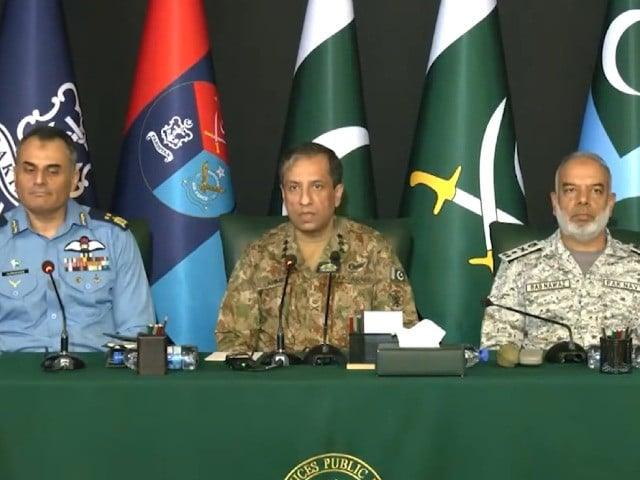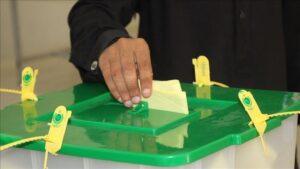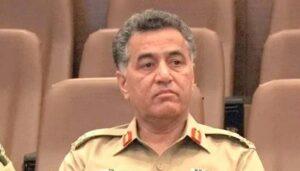Rawalpindi:
The Pakistani army reached 26 Indian military facilities and dozens of floated Pakistani drones about the main Indian cities, including New Delhi capital, in offensive operations on Saturday, Lieutenant Gen Ahmed Sharif Chaudhry, the general director of Public Relations between Services (ISPR), said Sunday.
The main military spokesman said that the Armed Forces of Pakistan fulfilled the promise they made to the nation to avenge the martyrdom of innocent civilians, including children, on strikes at night between May 6 and 7.
Chaudhry spoke with the media at a joint press conference together with the Mariscal Vice President of Air Aurangzeb Ahmed and the deputy director of Naval Personnel (Operations), the vice president of Admiral Raja Raba Nawaz, to share details of the Bunyanal Marsoos operation, held against India on Saturday.
Chaudhry said that 26 military objectives, as well as the facilities that were used to attack the Pakistani citizens and those companies that were responsible for promoting terrorism in Pakistan, dedicated themselves to Jammu and Kashmir (Iiojk) occupied by the Indians.
The objectives, included bases of the Air Force and Aviation of India in Suratgarh, Sirta, Adampur, Bhuj, Nalia, Bhatinda, Barnala, Harwara, Avantipura, Srinagar, Jammu, Moon, Ambala, Udhampur and Pathankot, all of which suffered great damage, he added.
“Barhmos’s facilities, who fired missiles in Pakistan and killed innocent civilians, were destroyed. S-400 battery system in Udhampur and Bhuj, were also attacked by the proud Air Force of Pakistan [PAF]”Lieutenant General Chaudhry told the media.
“The military and support logistics sites that helped maintain this illegal operation against innocent Pakistani civilians, such as the field supply deposit in URI and the radar station in Poonch, were also attacked,” he added.
In addition, said the main military spokesman, the headquarters of the military command, which helped plan the operation of killing innocent citizens, including the tenth and 80 brigade in KG Top and Nowshera were also destroyed.
The general director of the ISPR also said that the facilities that housed and trained elements of power to perpetrate terrorist attacks within Pakistan and kill innocent civilians here were specifically identified and destroyed.
On the other side of the control line (LOC), the military elements, including the headquarters, the logistics bases, the artillery positions and the positions that had caused civilian victims in Azad Jammu and Kashmir (AJK) through unpaved artillery and fire of small weapons were relentlessly and strongly attacked until they were damaged by the white flags and requested a restriction.
“Pakistan has brought justice and compensation for the aggression of the representable Indian military and the brutal murders of our citizens. Pakistan’s response was a demonstration of textbooks of the integrated union of tri-services enabled by the situational consciousness in real time and the war capabilities focused on the network,” he said.
“This synergy through air, earth, sea and cybernetic domains allowed precision commitments, overwhelming lethality and a fast tempo. All platforms operated in synergy, delivering coordinated effects in carefully selected decisive points,” he added.
Said Fateh missiles of the long-range Fateh series guided by precision F-1 and F-2 of the Pakistan army, PAF precision ammunition, murderous ammunition of long-range melodery were highly capable and long-range precision artillery.
Pakistan’s armed forces, he said, also carried out an integral and effective cybernetics offensive to temporarily paralyze and degrade the infrastructure and critical services that were being used by the Indian forces to maintain their operations, he continued.
“Let me tell you that the Pakistan armed forces have an adequate set of very sophisticated niche military technologies. Only some of which were used with restriction in this conflict. Pakistan’s military response has been precise, proportional and still remarkably restricted.”
The DG ISPR revealed that Pakistan also suffered an abnormal and immediate peak in terrorism sponsored by the Indians in Khyber-Pakhtunkhwa and Baluchistan, while “we were occupied in operations” in the Eastern Front.
This increase in terrorism, he said, claimed that India was directly involved in promoting terrorism in Pakistan and its representatives were operationalized during this time to distract the attention of security forces. However, the forces carried out more effective anti -terrorist operations in the western region without any pause, “he said.
The main military spokesman said that Pakistan never attacked civilians because “our religion, culture and professionalism do not allow us to” do it. “We will never go to civilians. Even from the Indian statements, did you find that Pakistan attacked more than military objectives? No.”
He said that Alhamd-O-Lillah, the armed forces of Pakistan “fulfilled the promise made to our people,” and added: “I start thanking Allah Almighty for their infinite blessings, mercy, help and divine support, since he has ordered believers to retaliate every time they are inactivated.”
He expressed sympathies with Shuhada’s families and prayed for the rapid recovery of injured compatriots. It extended sincere gratitude to all officers, soldiers, airplanes and sailors of the Armed Forces that made this success on the battlefield through their courage and professionalism possible.
He also expressed a deep appreciation to the brave Pakistani nation, including the youth of Pakistan, which became the frontline soldiers as information and cyber warriors in the country. “Deep thanks are also due to you, Pakistan’s media vibrant who also stopped as Bunyanun Marsoos,” he said.
“We are extremely grateful to the political leadership of all political parties without any distinction for their unified resolution in support of their armed forces,” and added that the Armed Forces were specifically grateful for the inspiring leadership of the Prime Minister of Pakistan and his cabinet ministers.
During the war, Chaudhry said that Pakistan’s air defense system worked precisely and destroyed all hostile drones that entered their airspace. He shared that around 84 drones were shot down. “We had promised that anything sent towards us would not return, and we kept that promise,” he said.
Answering a question about the high fire, said Chaudhry clarified that Pakistan never requested it. “Put it registered” that Pakistan “never requested a stop the fire,” he said. “On the night of May 6 and 7, after those cardados and cowardly attacks were made, the Indians requested and Pakistan gave a very clear answer that we will communicate only after having given the answer that this act deserves.”
On May 10, he said, after the “response and compensation [ ] Already request and intervention of international interlocutors, we responded to the application already made of the Indians, “he said.” If you observe the public statements of the Ministry of Defense and the Armed Forces of India, they clearly requested the reduction, “he said.
Answering another question, he said: “In a conflict between two rival nuclear powers … Such conflict is actually an absurd and is an inconceivable and pure stupidity. In the case of India and Pakistan, such conflict can cause a danger of more than 1.6 billion people,” he said.
“Actually, there is no space for war between India and Pakistan, and if someone wants to forge this space for war, the space for mutual annihilation is actually carved. That is why you saw how in this conflict Pakistan acted in a very mature way,” the GG emphasized.
“Through conventional forces, we kept control of the escalation, through conventional forces, we gave them a two -level response while ensuring that the Pakistani forces used in anti -terrorist operations … It is also exercised on them.”
DG ISPR has clarified that Pakistan has no Indian pilot in custody, blaming “social networks talk.” He said: “All this is part of false news and propaganda that has been generated from multiple sources.”
On the occasion, the Vicecene of the Ahmed air said that the PAF responded with courage and confidence. “Our action was based on our own moment and choice. The leadership was clear and gave us firm instructions,” he said.
He added that the PAF pointed to the largest number of Aerodromes of the Indian Air Force (IAF) in a single mission since 1971. “We avoid civil damage and hit with great precision,” he said. “The rapid and effective response of Pakistan prevented India from creating a new normality through aggressive actions.”
He said that Pakistan was still committed to protecting his airspace and promoting peace through force. He accredited the head of the air staff (CAS), Zaheer Ahmad Babar, as the main mind behind the operation. “He (CAS) gave us three tasks: restore deterrence, neutralize threats and control the air.”
Aurengzeb revealed that in the first phase of the response, Pakistan attacked the chorros of the Indian rafale, baseing the fleet near the western border. “This limited his options and freedom of action,” he said, added that India then launched attacks with unmanned planes against Pakistani civil areas. However, Pakistan’s radar and intermediary systems detected and disabled all drones, making them useless.
Vice Admiral Raja Raba Nawaz said that there was a lot of talked about the Indian aircraft carrier, Ins Vikrant, who approached Karachi. “We trace it closely from the beginning. From May 6 to 7, it was close to Bombay, and for May 9, it reached 400 nautical miles from our coast, then turned.”
He explained that if the carrier had approached, Pakistan’s Navy was ready to respond. “Our sea air arm was completely prepared, and we stayed in contact with the Air Force at all times,” he said.
“As a military officer, I do not take the enemy lightly, but let’s be realistic. The Vikrant only has 8-12 MIG -29, enough for his own defense, not much more,” he said, adding that the Indian Navy understood the great price they would pay if they tried to act from the sea, and that is why they stayed behind.
Raba Nawaz declared that the Navy of Pakistan had maintained constant surveillance within its maritime borders and had remained prepared to respond effectively, possessing the ability to deter any enemy intrusion into their territories. He added that the Navy had assured that the ports remained operational in times of tension with India.
(With application entry)




